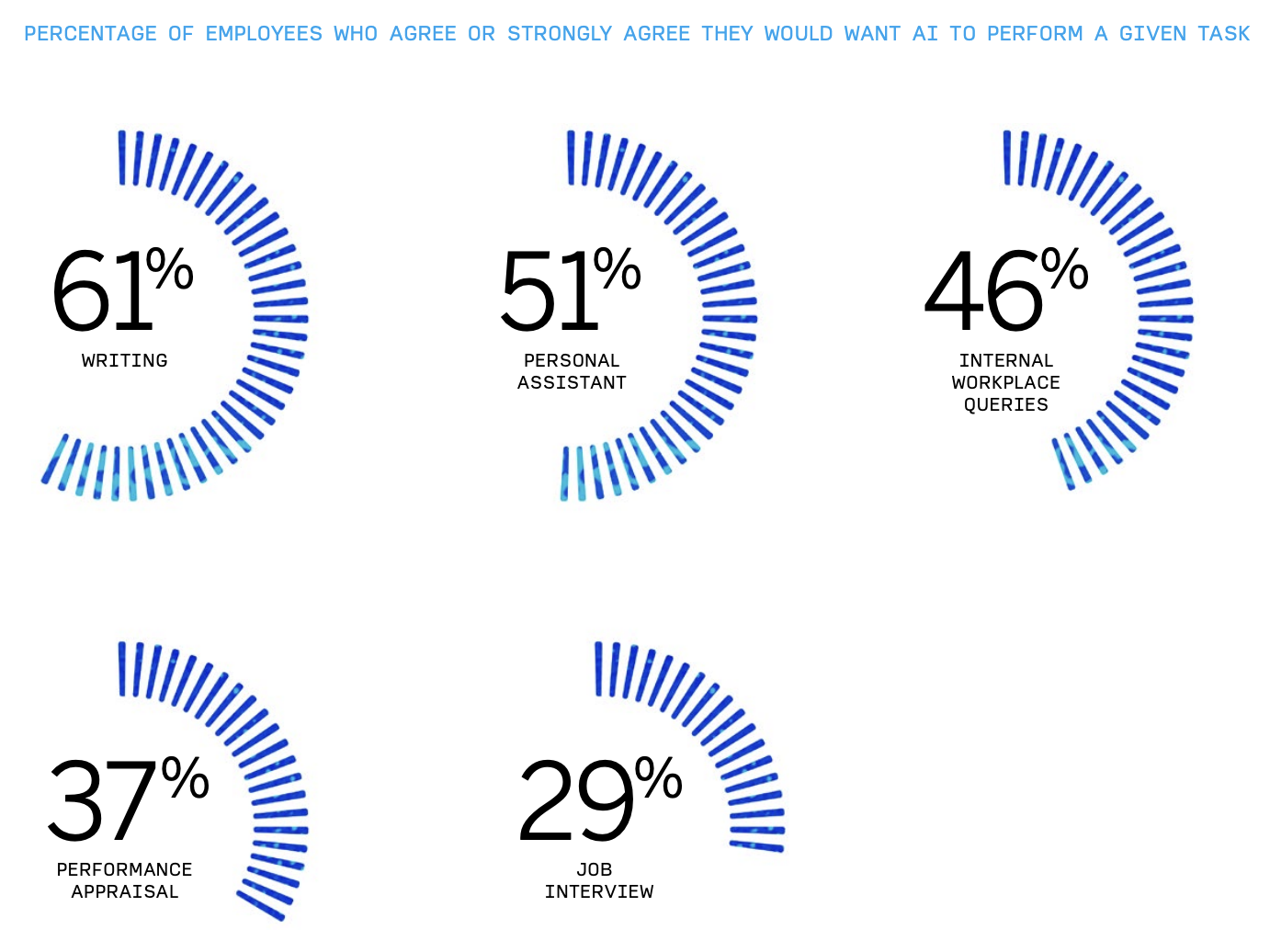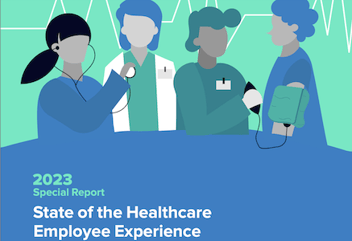The Qualtrics Employee Experience Trends for 2024 report is out and there are a few key things that healthcare leaders should think about. This annual report dives into the thoughts and feelings of 37,000 employees worldwide. Importantantly, it provides predictions for employee experience in 2024 and beyond based on the data collected.
The report introduction summarizes the content, “What do your employees expect in 2024? In short: balance.”
The three areas that stand out as particularly relevant to healthcare are employee feelings about AI, the increase in employees leaving after just months in a job, and the challenges of today’s onboarding experiences. While the report crosses all industries, these insights are worth a look for healthcare leaders.
Engaged Employees See AI In a Positive Light
Overall, 53% of employees are comfortable with AI at work and writing is the task they are most comfortable with. They are definitely more comfortable with AI tools that assist them versus those that play a role in managing them (i.e., AI review tools). Most importantly though, the data show the more engaged employees are and more positive they feel about their workplace, the more likely they are to see AI as a benefit to them and vice versa.
“Generally, the more positive you feel about your organization – the more trust you have in it – and the more senior your role, the more likely you are to believe that your organization will use AI for your benefit,” said Sarah Marrs, MSc, Director of EX Strategy Execution. “You also trust that AI will make you more productive and efficient at your job.”
In practical terms, an AI Assistant that helps manage call center volume so that call center agents can spend more time with complex calls is likely to have appeal. But there might be resistance if the culture is poor and employees feel disengaged and unhappy. In that case, the AI could be seen as a threat.

New Employees Are More Likely to Leave
For the last year or so, we’ve been hearing more and more from health systems that the highest turnover they have is with employees who are new and have only been employed for three to six months. “According to our research, employees with less than six months of tenure have the lowest intent to stay (three years or more) at their organization: just 38% versus 65% overall – a 27-point difference and three points lower than last year,” said the report.
The report suggests that organizations need to rethink onboarding to help new employees feel like they are engaged and have growth opportunities. ‘‘The new hire experience is a critical journey within the broader employee journey – one that sets the path of success for employees. Organizations must take stock of the important moments in the onboarding journey, finding ways to measure and improve them. It’s no longer just about ticking the boxes on an onboarding checklist. The social aspects need to be operationalized, too,” said Dr. Cecelia Herbert, PsyD, XMP XM Institute/Principal Catalyst
The Frontline Is At Risk
Along the same lines, frontline workers are the least supported, most unhappy and least trusting
“These are often challenging, on-your-feet-all-day jobs,” said Evans. “And yet, we’re seeing the biggest gaps here in recognition, low satisfaction with financial rewards, and a lack of growth and development opportunities offered by the organization. Frontline workers simply do not feel appreciated.”
Again it may be time to rethink the way you engage and communicate with these workers. They are eager to be seen and heard. Lack of communication is a key issue.
“The most common gap I see in survey follow-up is not in inaction, but in a lack of communication,” said Evans. “Leaders must be intentional about communicating to frontline workers so they know their voices have been heard.” “If these issues go unchecked, and you have no idea it’s going on, it could turn into a burnout problem, a turnover problem, and customer experience problem,” added Dr. Granger.
The report goes on to say, “This is a call to action for leaders: Pay attention to your frontline employees. Talk to them. Ask what they need. They are closest to your customers and products. Seek to understand their lived experiences and ideas for innovation to tap into their powerful insights.”
In summary, it’s time to rethink how you engage with new employees and your most vulnerable team members. Better engagement and communication can go a long way to helping them feel more appreciated and supported. That in turn can help create a more positive workplace, which can make employees more receptive to tools and technology like AI that can help them be more successful. To learn more about these and other trends in employee experience, download Qualtrics Employee Experience Trends for 2024.


